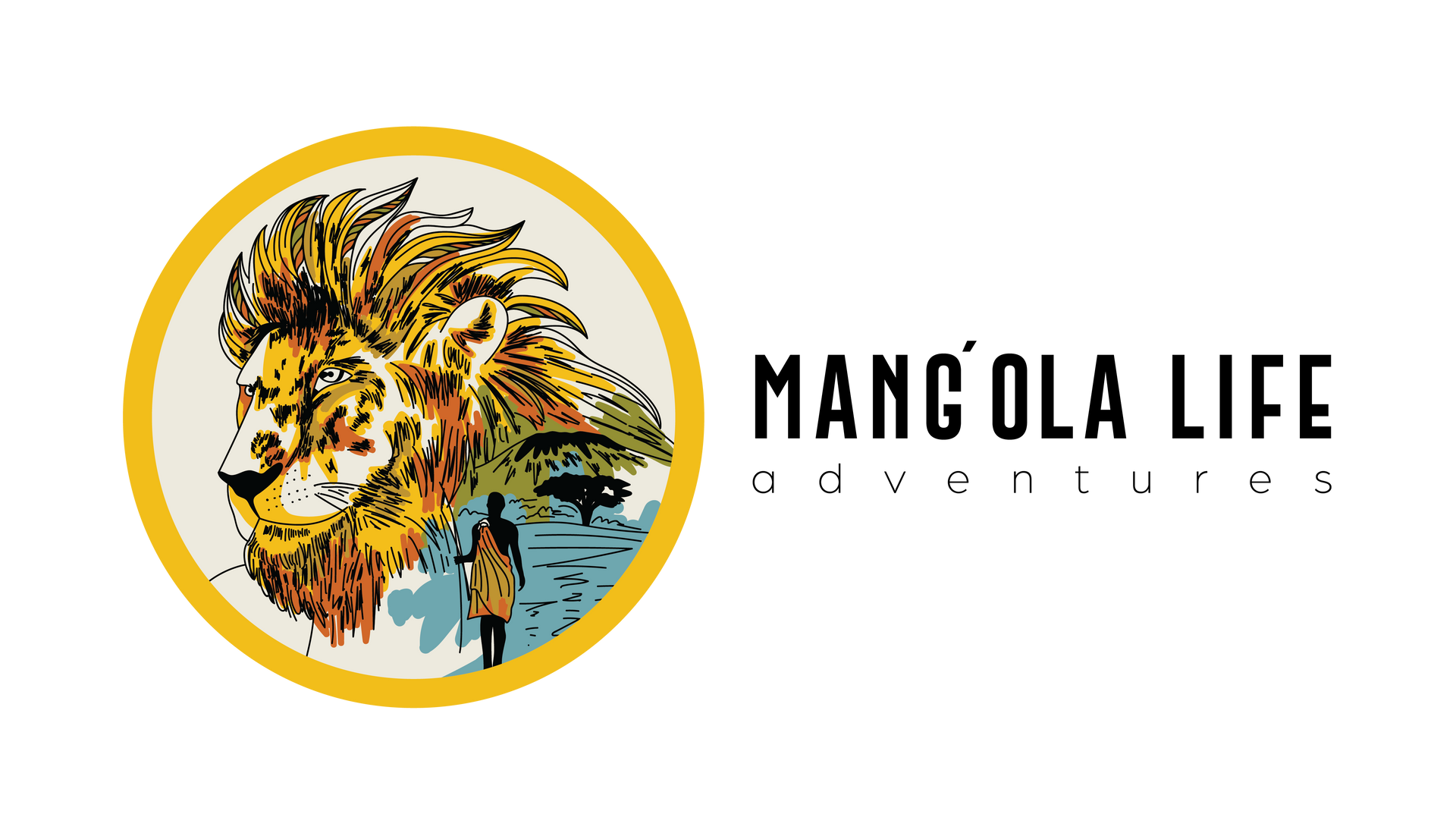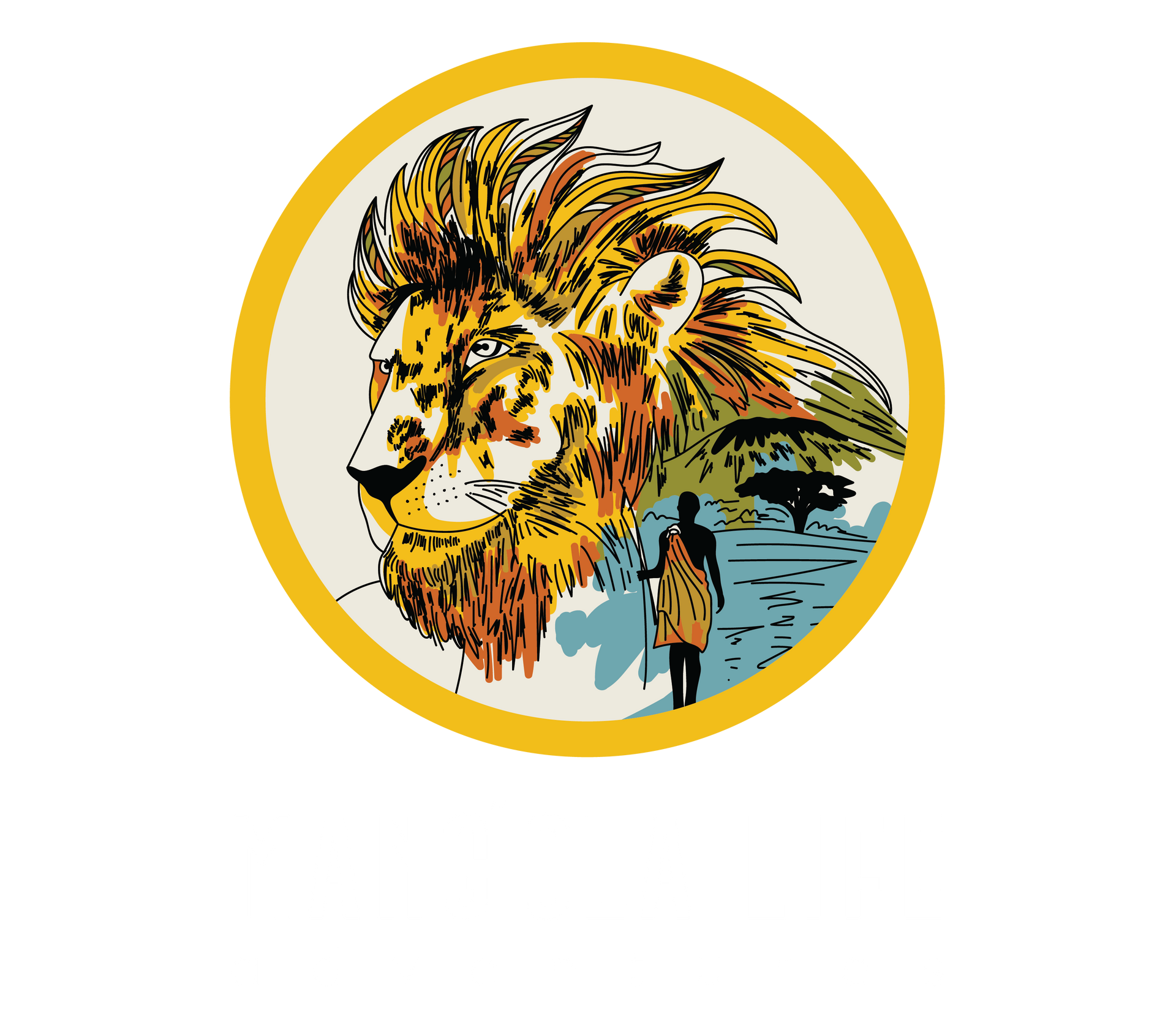Sustainable Safaris in Serengeti National Park: A Guide for Mindful Travelers
A journey that changes how you see the world
Picture this: you're sitting in an open-roof vehicle at golden hour, the sky painted in wild oranges and pinks. In front of you, hundreds of wildebeest stampede across the plains, kicking up dust and thunder.
That's where sustainable safaris come in, especially in places like Serengeti National Park, where the line between wonder and responsibility is razor-thin. But you're not just here for the spectacle, you're here because something inside you craves more than pretty pictures.
Maybe you've started to question how your presence impacts the places you visit. Perhaps you're craving a deeper connection to nature. Or maybe you've felt the tug, that instinct that says travel can be something sacred. Something reciprocal. Not just a getaway, but a return.
In this guide, we'll walk you through how to explore the Serengeti not just as a visitor, but as a respectful guest, someone who contributes to conservation, honors culture, and leaves footprints that matter.
In case we haven't met yet…
We are Mang'ola Life. We believe that travel is a sacred exchange, one that transforms not just the traveler, but the communities and ecosystems we engage with.
We're a sustainable safari company in Tanzania, rooted in regeneration, ancestral knowledge, and intentional experiences that honor both the land and the people. Whether you're here to witness the Great Migration or share tea with a Maasai guide, you're in the right place.
Why visit Serengeti National Park?
What makes the Serengeti so special?
Few places on Earth stir the soul like the Serengeti. This vast, untamed land is the stage for one of the most incredible natural phenomena on the planet, the Great Migration, where over 1.5 million wildebeest, zebras, and gazelles move in rhythmic harmony across the plains.
But the magic of Serengeti National Park goes beyond the migration.
It's also:
- One of the oldest and most intact ecosystems in the world, unchanged for over a million years.
- A place where time slows down, and your senses wake up. The crackle of grass under lion paws. The hush before an elephant herd emerges.
- Home to sacred spaces that indigenous communities have revered for generations.
Here, every sunrise feels like the beginning of the world again. And every encounter, from a cheetah chase to a dung beetle's slow journey, reminds you that you're part of something infinitely larger.
A living example of biodiversity and harmony
The Serengeti isn't just about scale, it’s about balance.
You'll find:
- Lion prides lounging under acacia trees
- Cheetahs scanning the horizon for movement
- Elephants move like ancient memories through golden grasslands
- More than 500 bird species, from lilac-breasted rollers to massive ostriches
But behind this abundance lies careful stewardship. The Serengeti is one of the few places where wildlife thrives because of, not despite, conservation efforts.
And that conservation? It's not just done in labs or offices. It’s guided by the wisdom of indigenous communities, people who have lived in sync with these lands long before borders protected them.
Their role is essential: from anti-poaching patrols to cultural education, they are the heart of the Serengeti's survival.

Serengeti National Park in Africa: Why it's iconic globally
Some places are beautiful. Others are sacred. The Serengeti is both.
As a designated UNESCO World Heritage Site, it stands not just as a haven for wildlife, but as a global emblem of what unspoiled nature looks like when it's allowed to flourish.
But let's be clear, this isn't just about wildlife photography or ticking off bucket-list animals. It's about witnessing a living miracle. The kind that pulses beneath your skin long after you leave.
When the world imagines "Africa," this is often the image they see: golden plains, giraffes silhouetted at sunset, lions stalking silently through the tall grass. But the Serengeti is not a postcard,it's a promise. If we protect something wild, it can still thrive.
And that promise? It needs travelers who don't just want to take,it requires those who come to give back. Explore the UNESCO‑listed Serengeti National Park to understand its role in ecological conservation and cultural heritage.
How Serengeti fits into Tanzania's safari circuit
One of the best things about the Serengeti is how seamlessly it weaves into Tanzania's broader tapestry of wild wonder.
It's often paired with:
- Ngorongoro Crater – A natural amphitheater bursting with life, just a few hours' drive southeast
- Lake Manyara National Park – Known for its tree-climbing lions and flamingo-dotted waters
- Tarangire National Park – A quieter, elephant-filled gem ideal for those seeking more solitude
These destinations form what many call the Northern Safari Circuit. This loop takes you from crater floors to vast savannahs, all while offering unique perspectives on biodiversity, culture, and conservation.
If you're crafting a slow, meaningful itinerary, don't just hop from place to place. Linger. Let each landscape teach you something different. Give yourself the gift of immersion, not just movement.
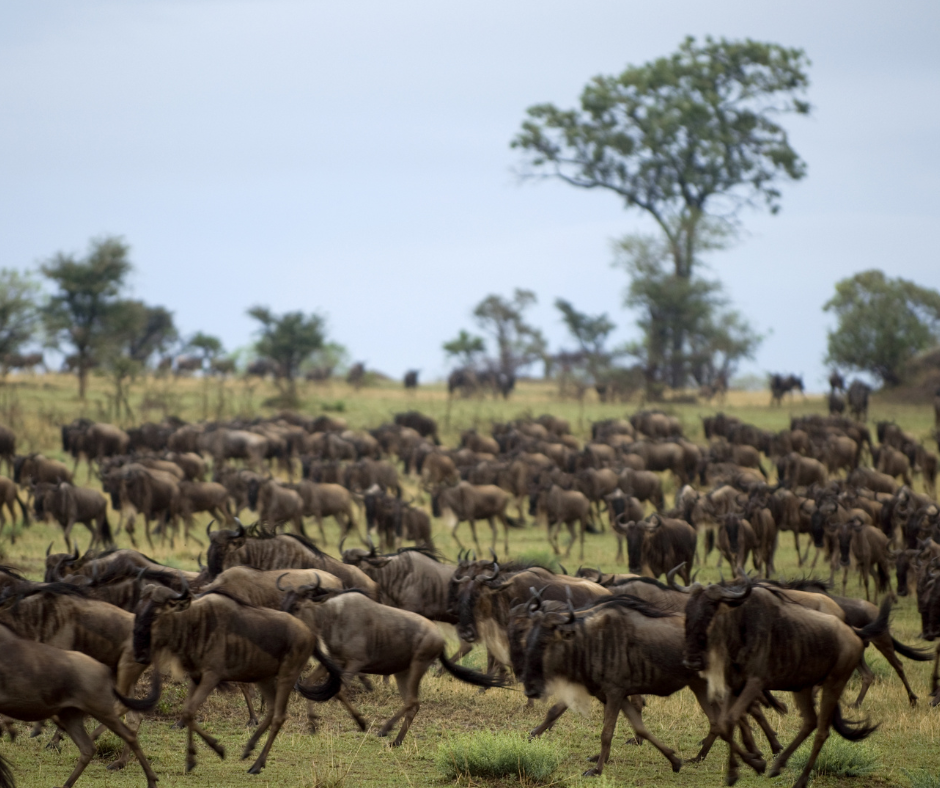
Planning your visit
When is the best month to visit Serengeti National Park?
Let's start with the truth: there's no wrong time to visit the Serengeti. Each season tells its own story; you just have to decide which one you want to be part of.
- June to October (Dry Season)
The classic safari experience. Animals gather at waterholes, grass is low, and visibility is high. It's the best time to catch dramatic predator-prey interactions and crisp, cinematic views. - November to May (Green Season)
Rain transforms the landscape into lush green velvet. Migratory birds arrive. Wildebeest calve in the southern plains. Fewer tourists mean quieter moments, and more room to breathe. - January to March (Calving Season)
New life everywhere. Thousands of baby wildebeest wobble into the world. This time is sacred, it's hope and vulnerability playing out on the open plains.
Tip for conscious travelers: The green season often gets overlooked, but it's when your tourism has the most impact. Lodges and guides still need support, and nature is just as generous. Plus, you get space. Solitude. The feeling that the land is speaking just to you.
Serengeti National Park weather by season
Let's break it down:
- Dry Season (June–Oct):
- Temps: 20–30°C (68–86°F)
- Skies are clear, evenings more incredible. Pack layers.
- Best for: Big cats, dramatic game drives, and broad horizons.
- Short Rains (Nov–Dec):
- Warm and green. Afternoon showers.
- Best for: Photography, birding, and less-crowded parks.
- Wet Season (March–May):
- Rain can be heavy, but never all day.
- Roads get muddy; landscapes glow.
- Best for: Newborn animals, budget travel, and feeling like you've entered Eden.
Travel consciously:
Pack eco-friendly gear. Choose biodegradable products. And remember, the weather doesn't “ruin” safaris. It reveals different layers of the story.
Where do you fly into for Serengeti National Park?
Your journey begins in the skies,and the choices you make here shape your trip's rhythm.
- Kilimanjaro International Airport (JRO)
This is the main entry point for international travelers. From here, it's about 8–9 hours by road to the Serengeti. - Arusha Airport (ARK)
For domestic flights, it's ideal if you're coming from Zanzibar or Dar es Salaam. A good starting point for northern circuit safaris.
Pro traveler tip:
Book flights and transfers through ethical safari companies that prioritize carbon offsetting and community-based logistics. It's not just about how you arrive, it's about how you land.
Cost & accessibility
How much does a Serengeti safari cost?
Let's be honest, a safari is an investment. But when done with intention, it's not just money spent. It's money that regenerates ecosystems, sustains communities, and changes you in return.
Safari costs vary widely depending on:
- Season – High season (June–October) can be 20–30% more expensive than green season (November–May)
- Length of stay – A quick 2-day trip might start at USD 800, while a 7-day immersive safari ranges from $2,500 to $5,000+, depending on style
- Type of experience – Luxury lodges with all-inclusive service vs. community-run camps with shared meals and storytelling by the fire
But here's a tip most blogs won't tell you: Cost doesn't always equal connection. The most expensive lodge doesn't guarantee the most meaningful moment. Sometimes, a simple breakfast shared with your Maasai guide at sunrise is worth more than a private plunge pool.
Travel tip: If your goal is impact, not just indulgence, budget for values, not velvet pillows.
Serengeti National Park entry fees & budget tips
The park has daily conservation fees that every traveler pays:

Check thelatest pricing here
You're not just paying for entry. You're contributing to a living system:
- Anti-poaching patrols
- Wildlife research
- Local schools and medical access
- Community-based conservation
Budget tips for mindful travelers:
- Travel during shoulder seasons (May or November) for better rates and quieter landscapes.
- Book shared safaris with small ethical groups, it's better for your wallet and the planet.
- Avoid plastic bottles and imported snacks, and support local vendors instead.
- Choose operators who transparently reinvest in the land and people.
Remember: Sustainability isn't just about nature, it's about fairness, too. Who benefits from your visit matters.
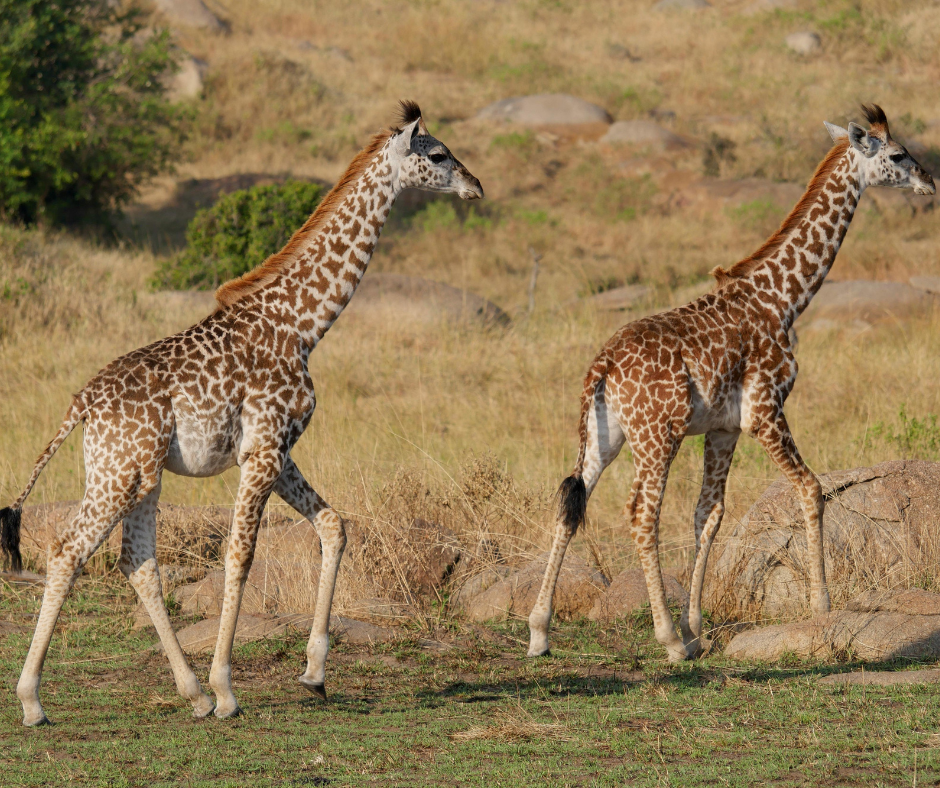
Accommodations rooted in place
Where to stay in Serengeti National Park
Where you rest your head is more than a logistical detail,it's a statement of values.
In the Serengeti, options range from:
- Eco-lodges are built with local materials and powered by solar energy.
- Tented camps that blend comfort with minimal footprint.
- Community-owned stays where your presence directly supports families and traditional land use.
These aren't just "nice places", they're part of the conservation effort. They create jobs, protect wildlife corridors, and invite you into a slower, more intentional rhythm.
Ask yourself: Do I want to consume this place, or do I want to learn from it?
Questions to guide your booking:
- Is this accommodation locally staffed?
- Do they use renewable energy or composting toilets?
- Is food sourced from nearby farms or flown in?
- Are cultural experiences exploitative,or co-created with locals?
How Mang'ola Life curates ethical shared accommodations and experiences
At Mang'ola Life, we don't chase stars or luxury ratings; we follow integrity.
Our safaris include carefully chosen camps and lodges that:
- Are co-owned or co-run by local communities.
- Prioritize ecological design and minimal impact.
- Foster real cultural exchange,not tourist performance.
- Offer affordable shared experiences without sacrificing intention.
Because when you stay in places rooted in purpose, your journey becomes part of the story.
And that's what we're here for: to reconnect you with what travel was always meant to be, an offering, a witnessing, a shared breath between people and place.
Whether you're waking to hyena calls in a canvas tent or learning to bead bracelets with a Maasai elder, your stay can be more than just "accommodation." It can be an act of restoration.
Safari tours with a purpose
Types of Serengeti National Park safari tours
No two safaris are the same, because no two travelers are. The Serengeti has a way of meeting you exactly where you are, offering not just wildlife, but wisdom.
These are just a few of the ways you can explore:
- Walking safaris: Step quietly into the rhythm of the land, guided by expert rangers and trackers who help you notice what others miss, tracks, textures, even the hush before a lion's roar.
- Wildlife drives: Classic open-vehicle safaris across vast golden plains. Perfect for witnessing everything from elephant herds to cheetah sprints.
- Cultural immersion experiences: Spend time in nearby communities, learning directly from elders, artisans, and farmers who've called this land home for generations.
It's not about ticking boxes, it's about depth over distance.
What makes a tour with Mang'ola Life different?
At Mang'ola Life, we don't believe in passive tourism. We believe in purposeful travel, the kind that honors land, uplifts culture, and leaves more than footprints.
Our Serengeti safaris are:
- Community-led: We partner with local guides, rangers, and storytellers who hold ancestral knowledge and deep ties to the land.
- Mindfulness-infused: Each journey is designed to help you slow down, observe deeply, and reconnect with nature on a soul level.
We don't rush you through. We invite you to belong. To listen. To offer presence instead of pressure.
Because travel isn't just movement it's meaning.

Why mindful choices matter in the age of mass tourism
While the Serengeti’s vast beauty remains a global treasure, the rise of mass tourism in recent years has introduced significant challenges. As one of Africa’s most visited safari destinations, the park now faces growing pressures: overcrowding during the Great Migration, strain on fragile ecosystems, and an unfortunate reality where tourism profits don’t always find their way back to the local communities.
It’s easy to assume that showing up is enough but conscious travel goes deeper.
Mindful travelers are now being asked to look beyond the surface and ask: Who is benefiting from my trip? What kind of experience am I supporting? By choosing safari operators who prioritize harmony over high volume those who honor the natural rhythms of the land, wildlife, and local cultures you help shift the system from extractive to regenerative.
This awareness isn’t just theoretical. It makes a tangible difference on the ground. By acknowledging the impact of mass tourism, we invite a more grounded and truthful narrative one that doesn’t romanticize the experience, but empowers travelers to be part of the solution. And that solution begins with choosing partners who value sustainability, slow travel, and reciprocity over speed and scale.
Ready for a safari that's soulful, sustainable, and unforgettable?
Begin your journey with Mang'ola Life, where we guide conscious travelers through Tanzania's wild beauty with respect, reverence, and deep connection.
Explore our Tanzania safari tours and step into a new kind of adventure, where every mile matters, every encounter uplifts, and every choice echoes forward.
Because some journeys don't just change where you are, they change who you become.
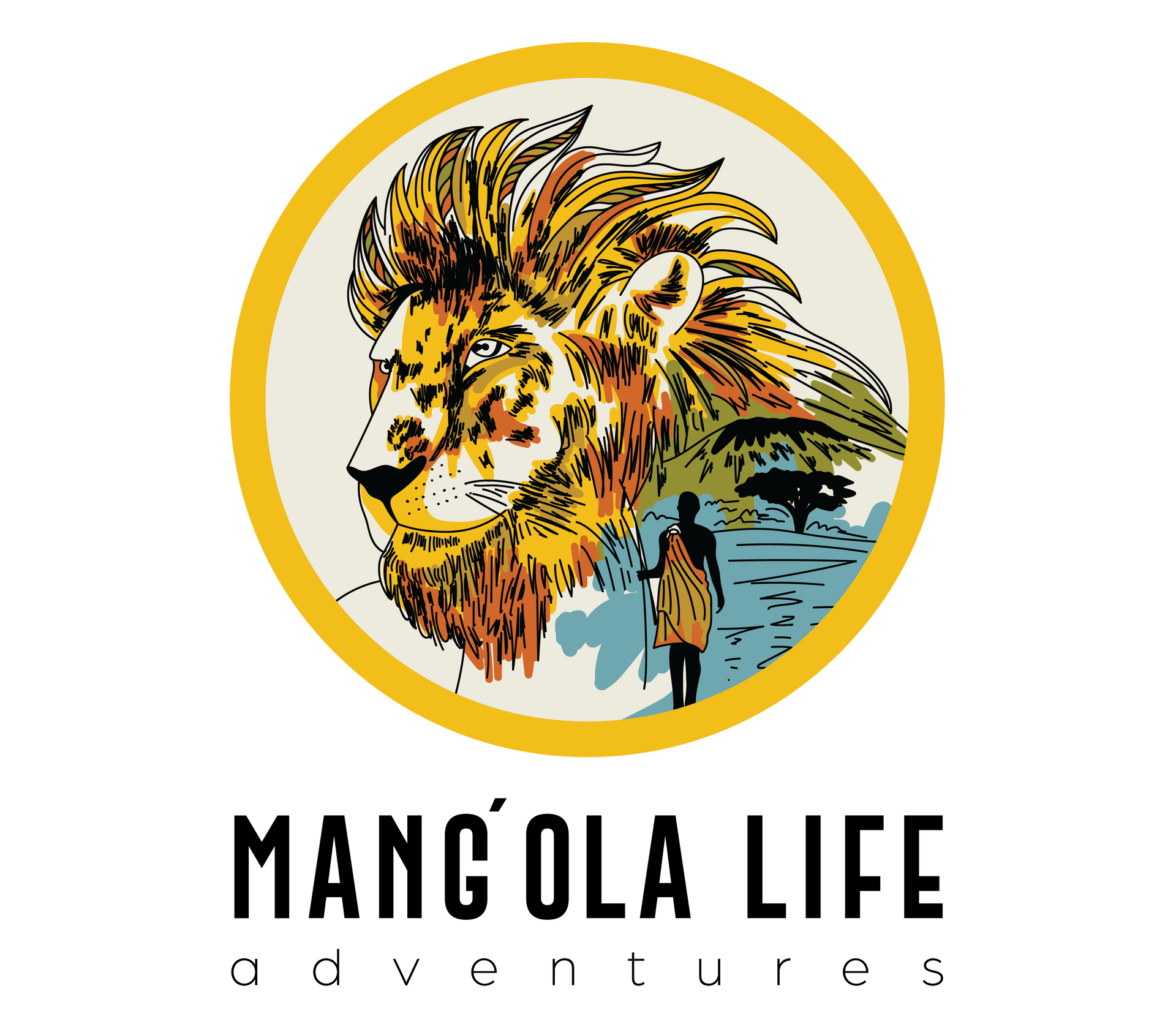
Welcome to Mang'ola life we are a sustainable safari company located in the heart of Tanzania, Africa. Plan your next adventure with us.





